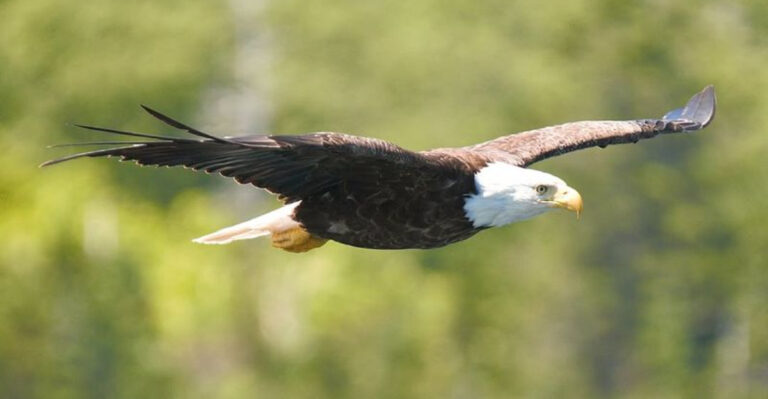Bald Eagles Are Thriving In Northern California, Here’s Where You Can Spot Them
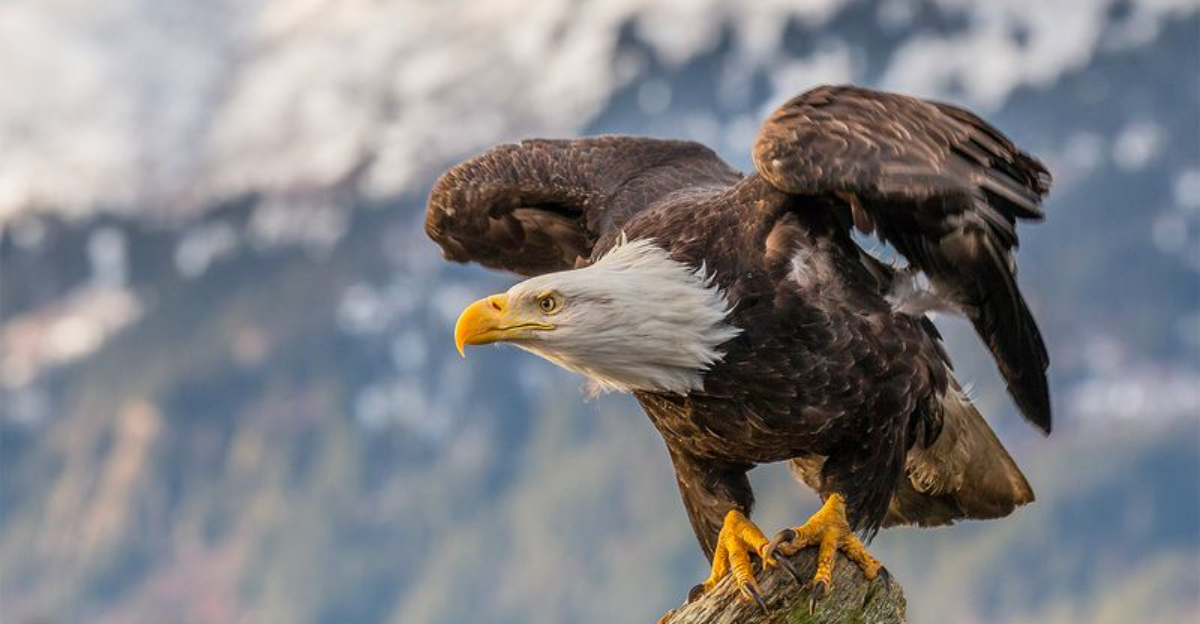
America’s national bird is making an impressive comeback across Northern California’s waterways and forests. After decades of population decline, bald eagles are once again gracing our skies with their majestic wingspan and distinctive white heads.
Their return represents one of wildlife conservation’s greatest success stories, offering bird enthusiasts and nature lovers incredible opportunities to witness these magnificent raptors in their natural habitat.
Bald Eagles Were Once Rare In California But Are Now Making A Comeback
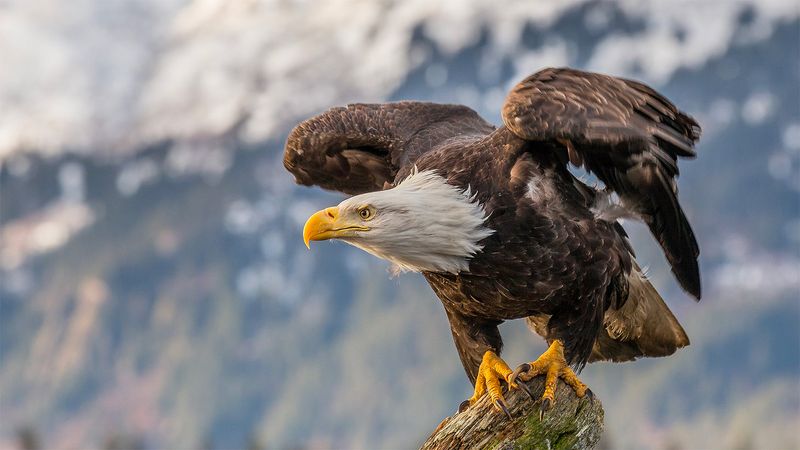
Back in the 1970s, you could count California’s breeding bald eagle pairs on just two hands. Their population had plummeted to fewer than 30 birds statewide, with scientists fearing local extinction.
Today, wildlife biologists estimate over 400 breeding pairs call the Golden State home, with Northern California hosting the largest concentration. This remarkable recovery didn’t happen by accident.
Federal protection under the Endangered Species Act in 1978 gave these birds a fighting chance. While still considered a conservation-dependent species, their increasing numbers in Northern California offer hope and excitement for wildlife enthusiasts who once thought they might never see our national symbol soaring overhead.
Northern California Has Become A Safe Haven For These Iconic Birds
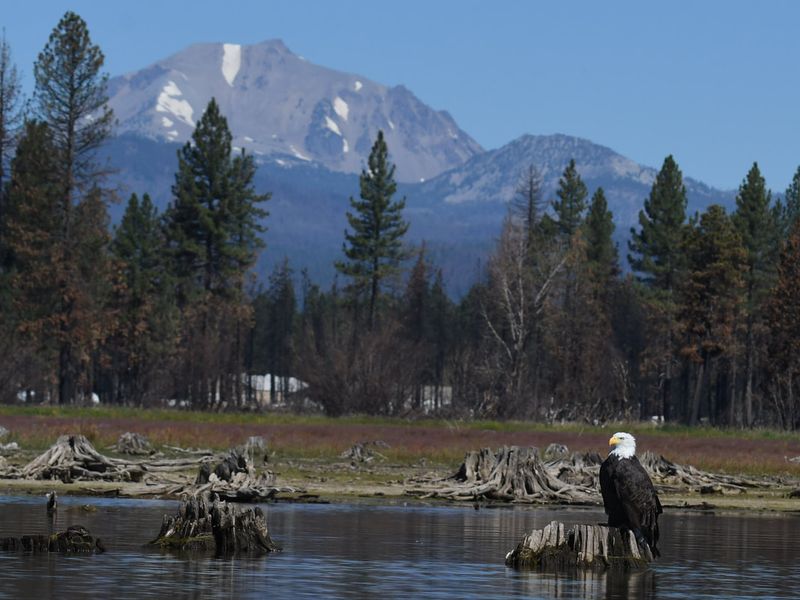
The rolling mountains, abundant waterways, and protected forests of Northern California create perfect bald eagle territory. Far from urban development, these areas provide the isolation eagles need for nesting and hunting.
Counties like Shasta, Siskiyou, and Modoc now boast some of the highest eagle densities in the state. Many wildlife refuges throughout the region have implemented specific management practices to protect eagle habitat.
Visitors often report multiple eagle sightings during single outings—something unheard of just 30 years ago. The region’s combination of healthy fish populations, tall trees for nesting, and minimal human disturbance has transformed Northern California into an eagle paradise where these birds can thrive undisturbed.
Cleaner Waterways And Conservation Efforts Have Helped Eagles Rebound
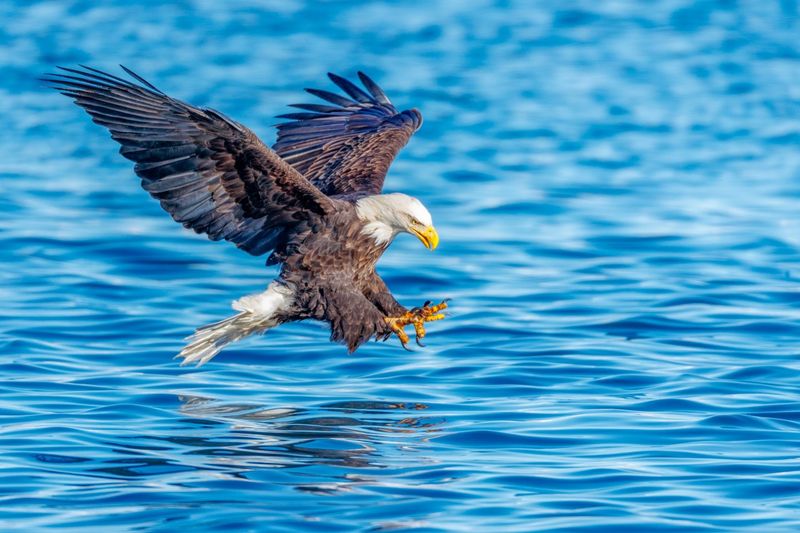
Remember when our rivers ran with pollution from mining and industry? Those days severely threatened bald eagles, who rely on clean water to catch healthy fish. The Clean Water Act changed everything.
Stricter regulations on industrial discharge and agricultural runoff have dramatically improved water quality across Northern California’s waterways. Fish populations—the eagle’s primary food source—have bounced back accordingly.
Conservation groups have also played a crucial role by protecting nesting sites from disturbance. Eagle-friendly forestry practices preserve the tall trees these birds need for their massive nests. The eagle’s recovery showcases how environmental protection measures directly benefit wildlife when properly implemented and enforced.
Bald Eagles Prefer Lakes, Rivers, And Wetlands With Plenty Of Fish
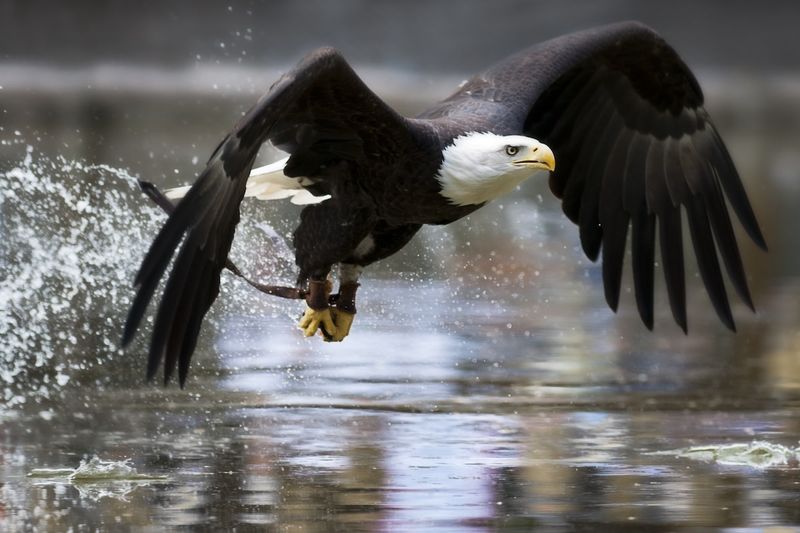
Fish make up roughly 70% of a bald eagle’s diet, explaining why these raptors establish territories near water bodies teeming with aquatic life. Northern California’s network of lakes, rivers, and reservoirs provides ideal hunting grounds.
Eagles typically perch on tall trees overlooking water, scanning for fish swimming near the surface. With their incredible eyesight—about four times sharper than human vision—they can spot prey from remarkable distances.
When hunting, they swoop down and snatch fish with their powerful talons, barely breaking flight. Reservoirs like Shasta and Trinity are particularly attractive to eagles because dam operations often stun fish, making them easier targets. This relationship between eagles and waterways makes lakeshores and riverbanks prime eagle-watching locations.
Winter And Early Spring Are The Best Times To See Them Nesting
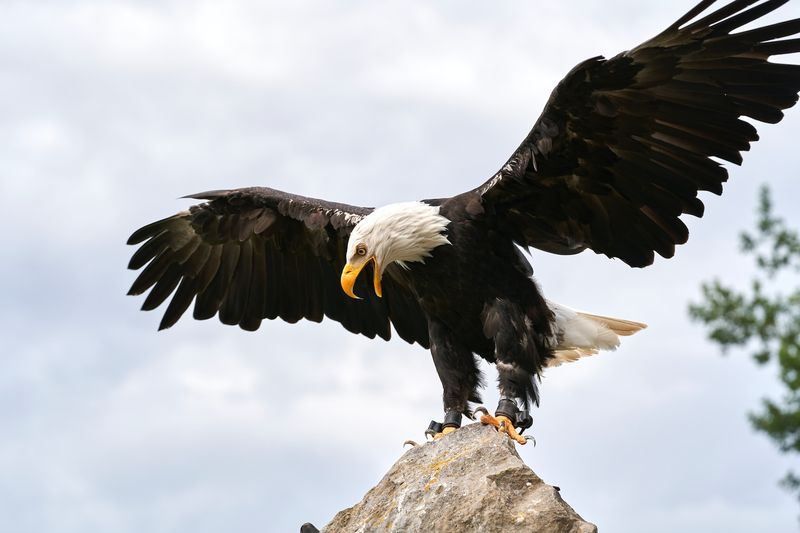
Mark your calendars for January through March! This magical window offers the best opportunity to observe bald eagles building and maintaining their enormous nests in Northern California.
During these months, eagles become especially active as they prepare for breeding season. Mating pairs work together collecting branches, moss, and other materials to construct or refurbish their nests high in the tallest trees.
The leafless winter trees provide clearer viewing opportunities before spring foliage obscures the nests. Early mornings offer prime viewing as eagles typically hunt at dawn. Bundle up warm, bring binoculars, and maintain a respectful distance—at least 330 feet from active nests to avoid disturbing these federally protected birds.
Shasta Lake And The Sacramento River Are Prime Eagle-Watching Spots

Shasta Lake’s 365 miles of shoreline creates a bald eagle paradise that draws bird enthusiasts from across the country. The lake’s numerous arms and inlets provide perfect hunting grounds and nesting areas for these magnificent birds.
The Sacramento River, flowing from the lake, offers additional prime viewing opportunities. Eagles follow the river’s course, hunting along its banks and perching in riverside trees.
For an unforgettable experience, try taking a boat tour on Shasta Lake during winter months. Local guides know exactly where eagles nest and hunt. The Pit River arm of the lake is especially known for its high concentration of eagles, with some visitors reporting seeing up to 20 birds in a single outing!
Trinity Lake And Lake Almanor Also Host Thriving Eagle Populations
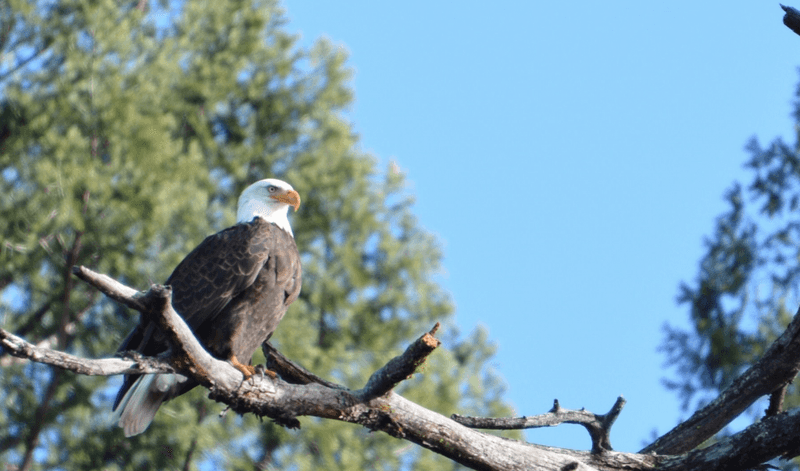
Trinity Lake shines as another eagle hotspot, particularly around Stuart Fork and East Fork coves. The lake’s remote location and minimal development create an undisturbed haven where eagles thrive year-round.
Further east, Lake Almanor in Plumas County has emerged as an eagle-watching destination. Its shallow waters make fish easier to catch, attracting numerous eagles to its shores.
Both lakes feature excellent viewing platforms established by the Forest Service specifically for eagle observation. Winter brings an additional bonus—migrating eagles from Canada join the resident population, sometimes doubling the number of birds. The contrast of white heads against evergreen forests makes these majestic birds surprisingly easy to spot, even for beginning birdwatchers.
Look For Bald Eagles Soaring Over Forests Or Perched Near Water
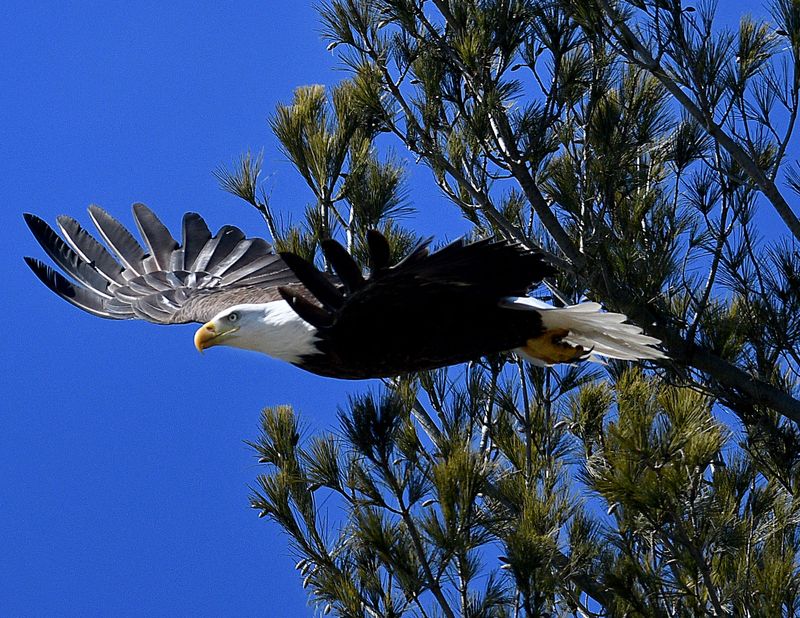
Spotting a bald eagle requires knowing their habits and preferred locations. These massive birds—with wingspans reaching 7.5 feet—often soar in wide circles high above forests and waterways, riding thermal air currents while searching for prey.
Dead or dying trees near water edges serve as favorite perching spots. Eagles choose these “snags” for their unobstructed views and easy takeoff access.
Early mornings typically offer the best viewing opportunities as eagles actively hunt before the day heats up. Bring binoculars and scan tall trees along shorelines. Their distinctive white heads (in adults) stand out against dark foliage, though younger eagles have mottled brown plumage until around age five. Patient observation usually rewards eagle-seekers with unforgettable sightings.
Bald Eagles Build Massive Nests That Can Weigh Over A Thousand Pounds
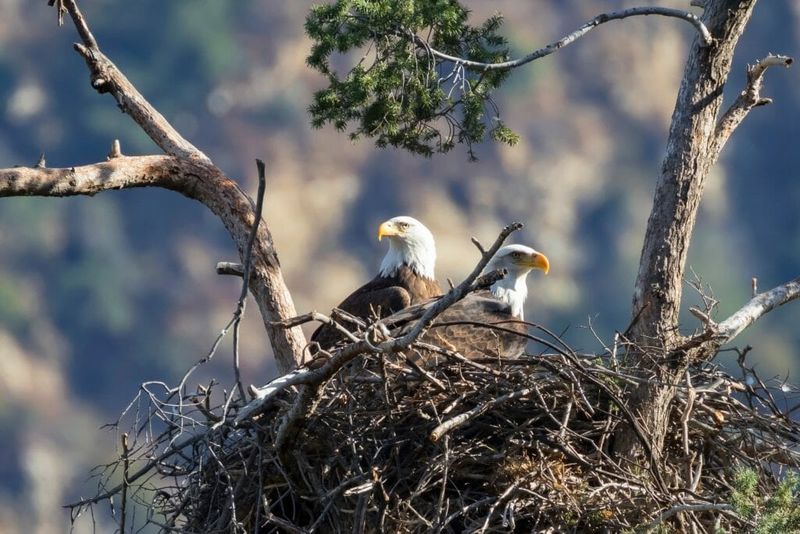
Eagle nests—called eyries—rank among nature’s most impressive architectural achievements. Mating pairs construct these enormous platforms high in sturdy trees, typically 50-125 feet above ground.
What starts as a modest structure grows monumentally over time. Eagles add new materials each breeding season, eventually creating nests measuring up to 10 feet across and 20 feet deep!
The record-holding nest, discovered in Florida, weighed over 2 tons after decades of additions. Northern California’s eagle nests might not reach such extremes but still impress at 4-5 feet wide and several hundred pounds. These massive structures become neighborhood landmarks, visible from considerable distances during leafless winter months when bald eagles begin their nesting activities.
They Mate For Life And Return To The Same Nest Year After Year
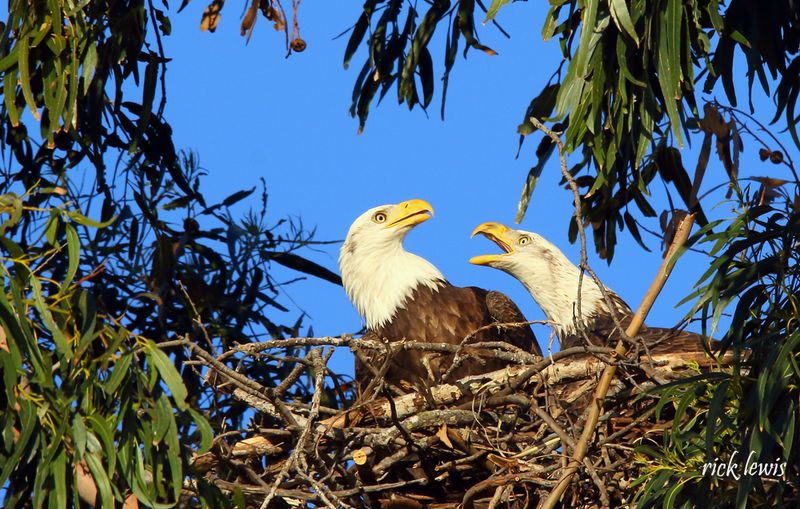
Bald eagles exemplify relationship goals with their remarkable lifelong partnerships. Once a pair bonds—usually between ages 4-5—they typically remain together until death, which can span 20+ years in the wild.
This faithful partnership extends to their nesting habits. Eagle couples return to the same territory and often the exact same nest annually, performing spectacular aerial courtship displays upon their return each breeding season.
Their dedication to home creates fascinating opportunities for eagle watchers in Northern California. By documenting nest locations, enthusiasts can reliably return to viewing spots year after year. Some well-established nests around Shasta and Trinity Lakes have been continuously occupied for decades, with different generations inheriting territories as older birds pass on.
California’s Ban On DDT Played A Huge Role In The Species’ Recovery

Few environmental success stories rival the bald eagle’s recovery from the devastating effects of DDT. This widely-used pesticide nearly wiped out eagle populations by causing them to lay eggs with shells too thin to support developing embryos.
California banned DDT in 1972, ahead of the nationwide ban. This proactive step allowed eagle populations to begin recovering earlier than in some other regions.
The results speak volumes. From fewer than 30 breeding pairs statewide in the 1970s, California now hosts hundreds. Northern California’s eagles rebounded particularly well thanks to the region’s extensive protected habitats. Their recovery represents powerful evidence that targeted environmental regulations can reverse even severe wildlife declines when properly implemented and given sufficient time to work.
Bald Eagles Are A True Conservation Success Story In The Golden State

From the brink of extinction to thriving populations, California’s bald eagles embody what dedicated conservation can achieve. Their recovery required coordinated efforts across government agencies, conservation organizations, and ordinary citizens.
The Endangered Species Act provided crucial legal protection. Habitat conservation programs preserved essential nesting and hunting grounds. Captive breeding programs boosted wild populations.
Today, Northern California residents regularly experience the thrill of seeing these magnificent birds in their natural habitat—something previous generations missed. Their success story offers hope for other endangered species recovery efforts. As you explore Northern California’s lakes and rivers, remember that each eagle sighting represents decades of conservation work and a powerful reminder that humans can repair environmental damage when we commit to positive change.






